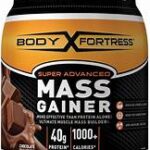In today’s fast-paced lifestyle, it is crucial to prioritize and maintain good health and fitness. Regular exercise plays a pivotal role in achieving optimal health and fitness levels. While various types of exercises benefit the body, cardiovascular exercises, also known as cardio, are particularly essential for improving cardiovascular health, boosting endurance, and burning calories.
This article highlights the importance of cardiovascular exercises and presents a comprehensive guide to incorporating them into your fitness routine.
Understanding Cardiovascular Exercises:

Cardiovascular exercises primarily involve activities that elevate your heart rate and increase your breathing rate, thereby working your cardiovascular system. These exercises are instrumental in improving overall heart health, strengthening the lungs, and boosting endurance. The benefits of cardiovascular exercise extend beyond the cardiovascular system, including stress reduction, weight management, improved mood, and enhanced sleep quality.
Types of Cardiovascular Exercises:
- Walking and Jogging: Walking and jogging are beginner-friendly cardiovascular exercises that can be easily incorporated into daily routines. These exercises improve cardiovascular health, increase bone density, and facilitate weight loss.
- Running: Running is a high-impact form of cardio that helps build stamina, strengthen muscles, and burn calories efficiently.
- Cycling: Cycling is a low-impact exercise that not only strengthens the lower body muscles but also aids in weight loss and lowers the risk of chronic diseases.
- Swimming: Swimming is a full-body workout that engages all major muscle groups while being gentle on the joints, making it suitable for people of all ages and fitness levels.
- Aerobic Dance and Zumba: These fun and energetic dances provide cardiovascular benefits while improving coordination, agility, and flexibility.
- Jump Rope: Jumping rope is a simple and effective cardio exercise that can be done at home or outdoors, requiring minimal equipment.
- High-Intensity Interval Training (HIIT): HIIT involves short bursts of intense exercise followed by brief recovery periods. It delivers maximum cardiovascular benefits in a shorter time, making it a time-efficient option for busy individuals.
Developing an Effective Cardiovascular Exercise Routine:
To develop an effective cardio routine, consider the following factors:
Setting Goals: Define your goals, whether it’s weight loss, improving endurance, or overall fitness. By establishing clear, doable goals, you may keep your focus and motivation.
Determining Frequency and Duration: Aim for at least 150 minutes of moderate-intensity cardio exercises or 75 minutes of vigorous activity spread across the week. Start with manageable durations and gradually increase the length and intensity of your workouts.
Warm-up and Cool-down Routines: Warm-up exercises before cardio sessions prepare your body for exercise and help prevent injuries. Similarly, cool-down exercises after a workout help your body gradually return to its resting state and prevent muscle soreness.
Monitoring Intensity Levels: Monitoring your heart rate or perceived exertion during workouts can help ensure you are working at an appropriate intensity level. Aim for the “talk test,” where you should be able to carry on a conversation while exercising but still feel challenged.
Incorporating Variety: To prevent boredom and plateauing, include a mix of different cardio exercises in your routine. This also helps to target different muscle groups and avoid overuse injuries.
Common Mistakes to Avoid:
To ensure safe and effective cardio sessions, it is crucial to avoid common mistakes that can hinder your progress. Here are some health and fitness tips to keep in mind for a healthy and successful workout routine:
To have safe and effective cardio sessions, it is important to avoid common mistakes such as neglecting warm-up and cool-down exercises, engaging in excessive cardio without rest days, using improper form and technique, overlooking the importance of recovery time, and neglecting strength training exercises. By being mindful of these pitfalls, you can ensure injury prevention and maximize the benefits of your cardio workouts.
Remember to listen to your body, maintain proper form, and avoid common mistakes to ensure safe and effective workouts. Stay motivated and enjoy the numerous physical and mental health benefits that come with regular cardiovascular exercise.
Tips for Staying Motivated:
- Find an exercise buddy or join group workouts: Surrounding yourself with like-minded individuals who share similar health and fitness goals can provide you with the support and accountability you need. Having a workout partner can make exercising more enjoyable and help keep you motivated.
- Set realistic goals: It’s crucial to set attainable and specific goals. Break down your larger goals into smaller, manageable ones that you can achieve gradually. This will give you a sense of accomplishment and keep you motivated to continue.
- Celebrate achievements: Celebrate your milestones and achievements along the way. Reward yourself for reaching certain goals, such as treating yourself to a massage, buying new workout gear, or enjoying a non-food-related reward.
- Mix up your workouts: Avoid monotony by switching up your exercise routine regularly. Trying new activities or adding variety to your workouts can keep things interesting and prevent boredom. Whether it’s trying a new fitness class, exploring outdoor activities, or incorporating different types of exercises, finding variety can help you stay motivated and engaged.
- Monitor your development: Keep an account of your exercises, measurements, and successes. This can be done through a fitness journal, smartphone apps, or wearable devices. Seeing how far you’ve come and the progress you’ve made can be highly motivating. It also allows you to identify areas where you can improve or adjust your routine.
By implementing these health and fitness tips, you can maintain long-term consistency and stay motivated on your journey to a healthier lifestyle.
Conclusion:
Regular cardiovascular exercise is essential for overall health and fitness. It helps improve cardiovascular health, increase endurance, burn calories, and reduce the risk of chronic diseases. You can achieve optimal health and fitness levels by incorporating various forms of cardiovascular exercises into your routine, setting achievable goals, and consistently monitoring your progress.











